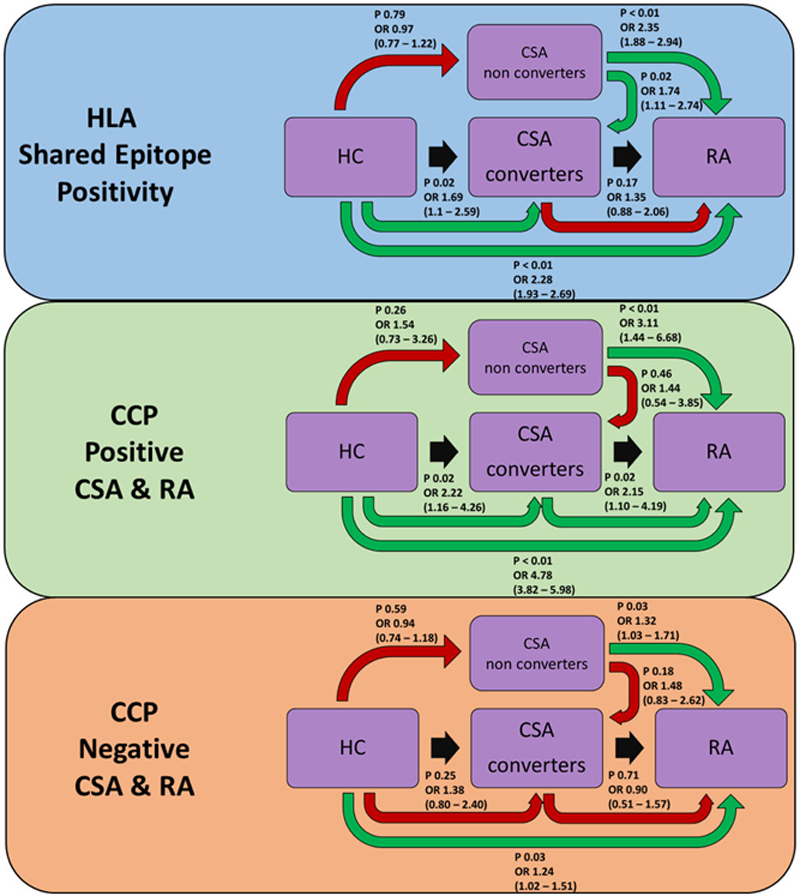

Background: The identification of a pre-RA stage of patients with clinically suspect arthralgia (CSA) has proven to be beneficial in the early detection of Rheumatoid disease. Similarly, genetic susceptibility studies have identified important genetic risk factors for the development of (CCP positive) RA. 1 The question that arises is whether these findings represent independent etiological pathways and could therefore be complimentary in the early diagnosis of RA.
Objectives: To corroborate the knowledge of genetic differences between HC and RA patients and extend it to include the CSA stage of disease.
Methods: We used three datasets sampled from the same region in the Netherlands: 1,085 healthy controls (HC), 530 CSA and 1,277 RA patients. CSA patients were monitored for a median of 2 years for conversion into clinically apparent inflammatory arthritis (CSAc) or not (CSAnc). 2 We assessed the association between HLA SE and disease stage using logistic regression. The analysis was repeated in the CCP positive and CCP negative strata of both the CSA and the RA populations.
Results: Consistent with previous studies, HLA SE was significantly enriched in RA patients compared to HC (OR 2.28) (
Conclusion: HLA SE is more prevalent in patients who developed (rheumatoid) arthritis than in both healthy controls and CSA patients who do not progress to arthritis. The results presented here seem to indicate a clear distinction between CSA patients who develop arthritis and those who do not. We therefore believe that known RA genetics play a role in the development of arthritis rather than the CSA symptoms. While this relationship varies by CCP status, an independent effect remains. Studies into the broader role of genetics beyond HLA SE are currently underway.
Distinguishing ability of HLA SE across HC, CSAc, CSAnc and RA in the full populations as well as in the CCP positive and negative stratifications. The arrowhead indicates the “case” status in each logistic regression. OR’s (95% CI) derived from regression coefficients indicate the change in odds ratio attributable to HLA SE positivity.

REFERENCES:
[1]van der Helm-van Mil, A. H., et al. Arthritis and rheumatism, 2006. 54(4): p. 1117–1121.
[2]van Steenbergen, H.W., et al. Ann Rheum Dis, 2017. 76(3): p. 491-496.
Disclosure of Interests: None declared